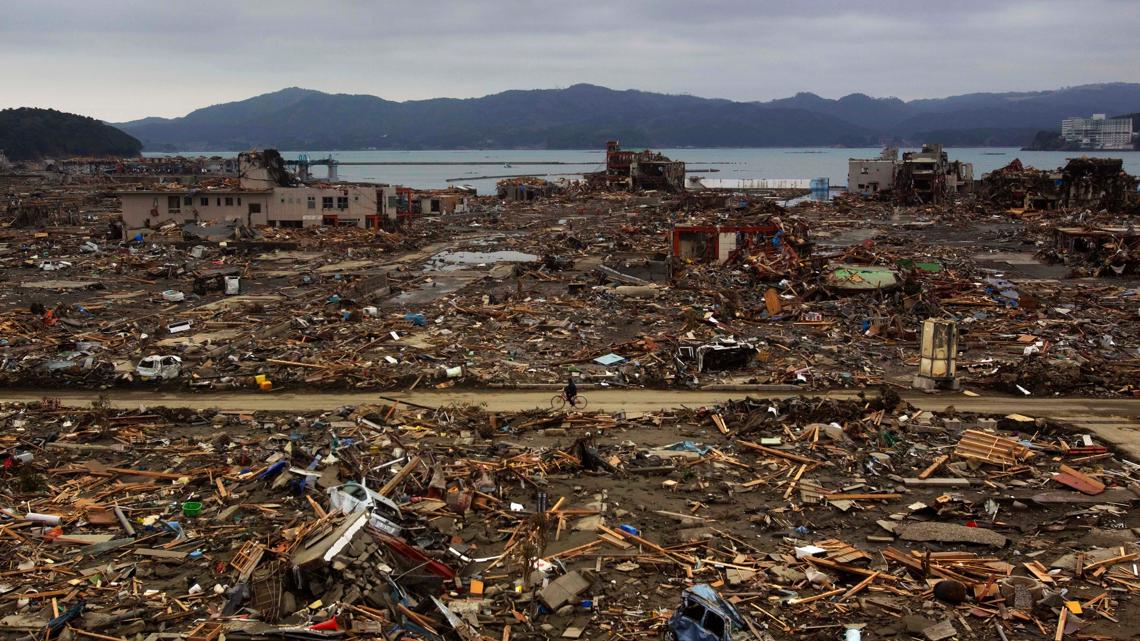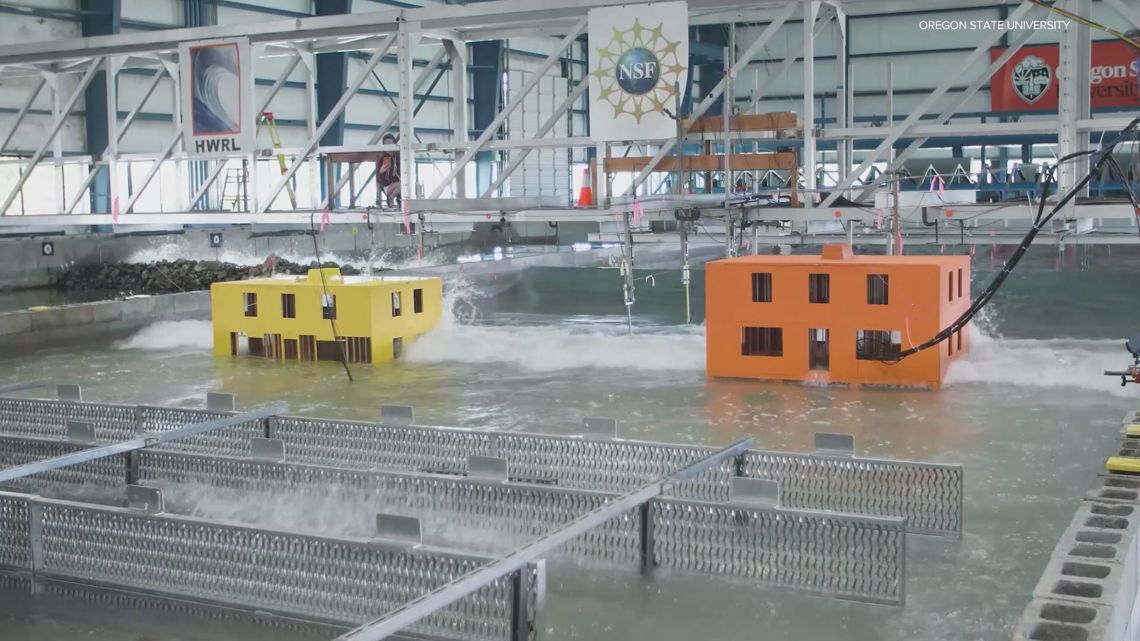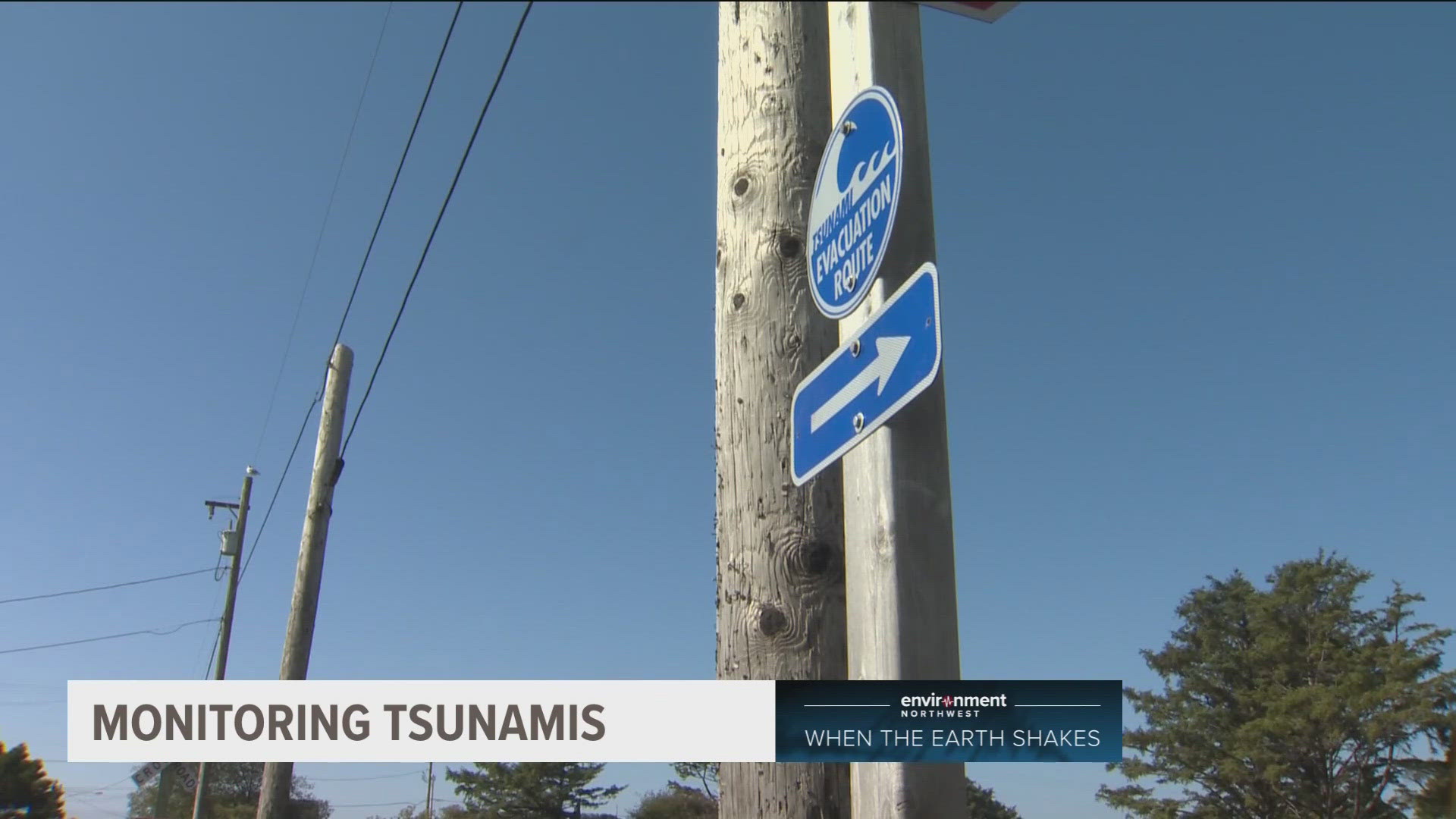CORVALLIS, Ore. —
Since January of 1700, pressure has been building beneath the waters of the Pacific.
Off the coast of Oregon and Washington, several tectonic plates have been sliding under the plate beneath the North American continent.
Sometime – maybe sometime soon – that pressure will be released.
When the Cascadia Subduction Zone ruptures, it is likely to create a massive earthquake that will be felt across the Pacific Northwest.
But it will also create something just as dangerous.
“The day it releases all that tension, all that stress is just released, the plate lifts up, pushes the water out of the way, and that's what creates the tsunami,” said Dan Cox, a professor of coastal and ocean engineering at Oregon State University. “That would be extremely devastating.”
The threat of a tsunami is not a new one, and it's not unique to the West Coast, but there are some new efforts to make coastal communities more resilient to a devastating event we know is coming.
And you don’t have to go back to 1700 — the last time the Cascadia Subduction Zone produced a major quake — to see what kind of havoc a tsunami would wreak on our coast.
The Tohoku earthquake and tsunami
On March 11, 2011, a fault similar to the Cascadia Subduction Zone ruptured off the northeast coast of Japan.
The magnitude-9 Tohoku earthquake shook the ground for roughly six minutes. Within half an hour, a wall of water arrived at the coast.
Sea walls were easily overcome by the waves. Whole villages, mostly in rural parts of the country, were washed away. A nuclear power plant was knocked offline and nearly melted down.


Between the earthquake and tsunami, at least 18,000 people were killed.
Cox went there to study the aftermath.
“I was actually in Japan after the 2011 tsunami, and I walked through town after town,” he said. “The Tohoku tsunami hit a lot of rural communities, and I think that's very similar to what we have here in Oregon.”
It's about the people
Along the West Coast, that series of events could repeat.
The subduction zone is capable of creating an earthquake just as large — at or above magnitude 9. The shaking would last for five minutes or more, and the ground on the immediate coast is expected to sink by up to 6 feet.
The tsunami would follow within 15 to 30 minutes with waves up to 40 feet high, which could last for hours after the shaking stops.
The U.S. Geological Survey estimated that nearly 2,000 businesses, 10,000 homes and some 22,000 people live in areas that would be inundated.
“Wood-frame buildings, residential structures, houses, they really don't fare well,” said Cox. “The expectation is most of them are going to get washed away.”
The areas with the biggest risk are low-lying population centers, Cox said.
“The parts of the coast I worry about is where the people are,” he said, noting that places like Seaside, Neskowin and Warrenton could be especially hard hit.
The death toll from a full rupture of the Cascadia Subduction Zone could reach 10,000, with roughly half of those caused by the tsunami.
But there are some people working to bring that number down.
The making of a mini tsunami
Housed in a nondescript warehouse on the western edge of the Oregon State campus is the O.H. Hinsdale Wave Research Laboratory.
For roughly 50 years, researchers have been using the lab to study how waves form, travel and the damage they can do.
“We are really passionate on waves, how they work and what we call coastal engineering,” said Pedro Lomonaco, director of the lab.
On one side of the building is an enormous wave basin, used to study waves that travel in multiple directions. The other half of the building houses the large wave flume, a 350-foot-long canal with a wave generator at one end.


When KGW visited the lab, a group of researchers from Louisiana State University and the University of Hawaii were performing experiments to see how different types of debris can affect structures in a tsunami.
Lomonaco said this type of research is especially important.
“The water is going to come with a lot of sand and debris and trees and houses and containers and cars and everything else,” he said. “What kills you in a tsunami is the debris, not the wave itself.”
Wooden blocks, about the size of a large brick, acted as stand ins for 40-foot shipping containers. The researchers carefully arranged them in front of a series of metal rods, each affixed with sensors to measure the force of impact.
Once the experiment was ready, the researchers gave the signal and the wave generator pushed forward, sending a miniature tsunami down the flume, toppling the wooden blocks and sending them crashing into the metal rods.
Watching from above, the small crashing wave wasn’t exactly impressive, but remembering that each block represents a shipping container, it was easy to see the destruction that tsunamis can cause.
And the results from these kinds of experiments have been put into real-world applications.
Similar experiments last year have already yielded changes in building codes, Lomonaco said.
“To me, is one of the fastest answers that we have seen,” Lomonaco said. “Normally fundamental research takes years to trickle all the way to the building code. This case was really fast.”
Experts say there is a 37% chance of a Cascadia Subduction Zone quake in the next 50 years. So, if you live in a community threatened by tsunamis, though, experiments in a lab and changes to building codes might not do much to ease your mind.
For those folks, Cox had some advice: the time to start planning is now.
“Knowing where's high ground, how to get to high ground and having a plan to reconnect after the event,” Cox said. “Good news is in Oregon we have a lot of high ground, so there are possibilities.”
And Cox said, in a larger sense, the trend in tsunami preparation is trending in the right direction.
“When I was first here, there was not even awareness of it,” he said. “It was like, ‘well, we're aware, but we don't want to Do certain things,’ and now it's like all options on the table. Let's try to figure it out,” he said.

